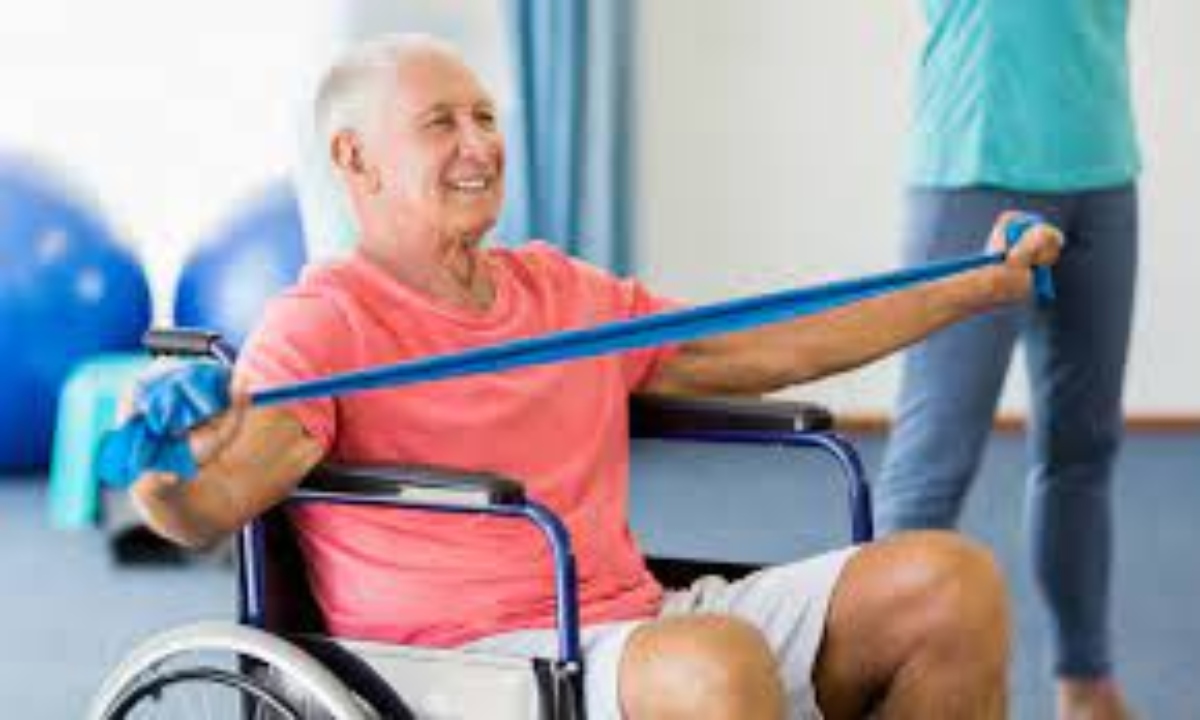A programme of regular exercise along with expert dietary advice is linked to a reduction in mobility problems among frail older people living in the community, finds a trial.
The findings were published in The BMJ. The combination of aerobic (walking), strength, flexibility, and balance exercises alongside personalised nutritional counselling reduced mobility disability by 22 per cent over three years.
US and EU data indicate that about 13 per cent of adults aged 70 years and older living in the community have mobility disability, which is linked to poor quality of life, admission to hospital or residential care, and death, as well as greater healthcare costs.
It is therefore important to find safe and effective ways to preserve mobility in older people at risk of further decline.
So researchers designed the SPRINTT trial to find out whether a combined intervention of physical activity with technological support and nutritional counselling prevents mobility disability in frail older adults compared with education on healthy ageing.
Their findings are based on 1,519 men and women (average age 79 years) with physical frailty and sarcopenia (a combination of reduced physical function and low muscle mass) recruited from 16 clinical sites across 11 European countries between 2016 and 2019.
Physical frailty and sarcopenia was defined as having a physical performance battery (SPPB) score of 3 to 9 points (score range 0 to 12, with lower scores indicating poorer physical function) and low levels of muscle mass, but able to independently walk 400 metres in 15 minutes.
In all, 760 participants were randomised to the intervention, 759 received education on healthy ageing (controls), and all were monitored for up to 36 months.
The intervention group received twice weekly moderate intensity physical activity sessions at a centre and up to four times weekly at home alongside personalised nutritional counselling. Activity was measured by an actimeter worn on the thigh.
Controls received education on healthy ageing once a month and a brief instructor led programme of upper body stretching exercises or relaxation techniques.
Among participants with SPPB scores of 3-7 at the start of the trial, mobility disability occurred in 47 per cent assigned to the intervention and 53 per cent controls.
Persistent mobility disability (inability to walk 400 m on two consecutive occasions) occurred in 21 per cent of intervention participants compared with 25 per cent of controls. SPPB scores increased more in the intervention group than in controls at both 24 months and 36 months (average differences of 0.8 and 1 point, respectively).
Women in the intervention group lost less muscle strength (0.9 kg at 24 months) and less muscle mass (0.24 kg and 0.49 kg at 24 months and 36 months, respectively) than control women, but no significant group differences were seen in men.
The risk of adverse events was, however, greater among intervention participants (56 per cent) than controls (50 per cent).
In a separate analysis of participants with better mobility (SPPB scores of 8 or 9 at the start of the trial), the intervention did not affect the risk of developing mobility disability and had marginal effects on physical performance.
The researchers acknowledge some limitations. For example, older adults with important cognitive deficits were not included, and almost all participants were white, so findings may not apply to other ethnic groups.
However, retention and adherence to interventions were high compared with other similar trials, and their use of validated tests in a geographically and culturally diverse group of frail older people across Europe, suggests that results are solid.
As such, they conclude that such an intervention “may be proposed as a strategy to preserve mobility in older people at risk of disability.”
This fresh evidence confirms the benefits of structured physical activity in community living older adults, says Thomas Gill at Yale School of Medicine in a linked editorial.
He acknowledges that translating even the best designed trial findings into clinical practice can be challenging, but says these findings, along with those from another large US trial (the LIFE Study), “provide compelling evidence that mobility in the community can be preserved among vulnerable older people through structured physical activity, with walking as the primary modality.”
He notes that the cost effectiveness of the LIFE programme “was found to be comparable to that of many commonly recommended medical treatments.”
Confirming these findings in SPRINTT “would further strengthen the case for developing, implementing, and supporting community based physical activity programmes to preserve independent mobility among vulnerable older people,” he concludes. (ANI)
US and EU data indicate that about 13 per cent of adults aged 70 years and older living in the community have mobility disability, which is linked to poor quality of life, admission to hospital or residential care, and death, as well as greater healthcare costs.
It is therefore important to find safe and effective ways to preserve mobility in older people at risk of further decline.






















